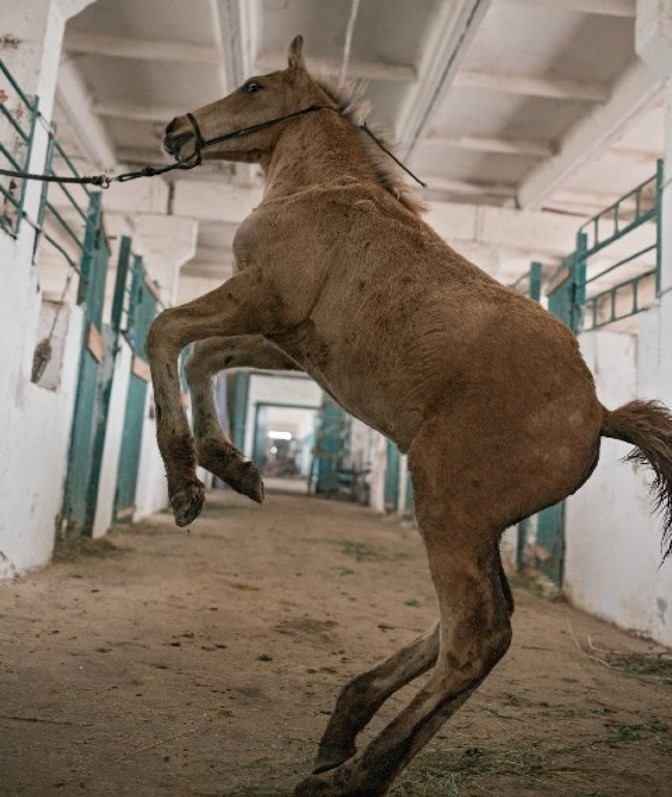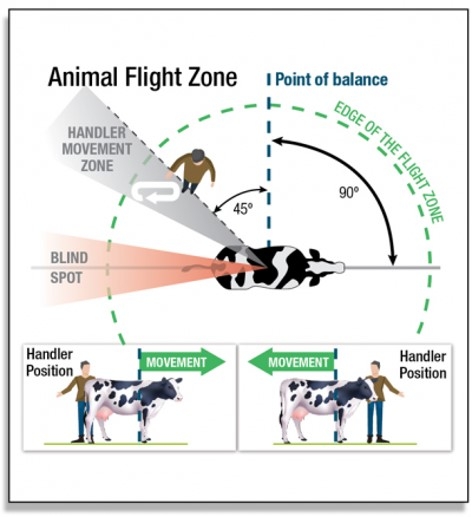Module 8: Animal Handling

In 2020, there were 11,560 animal-related incidents that involved one or more days away from work. 3,050 of those incidents involved being struck by an animal. Animal handling resulted in 18 fatalities in 2021.
Animal Incidents
Farm animals generally speaking are not agressive. Most incidents with animals come from biting, kicking, scratching, or being crushed. Many cases it was in the way the animal was handled. For example, studies on goats have shown that agressive behavior stems from their handling. If they are hit and slapped, that is a learned behavior and they ram back at you. Other consideration should be given to whether the animal felt threatened, being protective of young, sick, is in tight quarters, or hormonally charged.
Reducing the Threat Level

Much like you have a comfort level with your personal space, animals do too. If you appear from an animals blind spot, that can spook them or make them feel threatened. Recognize and respect the animal's comfort level with people. Especially when you have a new animal (like a horse you are trying to break).
Speak softly and avoid fast movements around the animal. Yelling or high-pitched noises can distress an animal and cause them to kick, charge, or run.
Controlling the Hazards
Engineering Controls
Good facility design adds to your safety.
- Fences and gates should be sound, and strong enough to contain the animals.
- Fully-walled fencing in alleys and chutes can reduce stress and increase compliance.
- Footing and flooring are critical factors in animal handling.
- Wet, slippery, uneven or muddy walkways create stress and anxiety.
- Non-slip flooring is the standard for chutes, alleys, and high-contact areas.

- Shadows will cause large animals to balk.
- Lighting should be diffuse and even. Animals notice differences in lighting, and will typically move to a more-lit area.
- Reduce noise and remove distractions that may startle animals, such as loose chains on fencing or equipment.
Work Practices
Like it was mentioned before, treating animals kindly, with respect, and speaking softly can go a long way in keeping an animal calm. Also remember to use adequate handling restraints, always leave yourself a way to escape, and alway try to have help.
Cattle behavior and handling practices
Personal Protective Equipment (PPE)
Employers are responsible for evaluating, providing, and training employees on the PPE required to address hazards that are not otherwise controlled. This may include noise and ergonomic hazards.
Appropriate clothing for handling animals should include long pants and closed-toe shoes, at a minimum. Disposable gowns/coveralls, gloves, shoe covers, and respiratory protection may be indicated if dealing with sick or injured animals.
Footwear should be appropriate for your role, the type of animal being handled, and environmental hazards. Non-slip, protective-toe boots are often indicated. Muck boots generally provide no stability or impact protection. While they are useful in snow, cold and mud, they are not recommended for use when handling large animals.
ANIMAL FACT SHEETS


